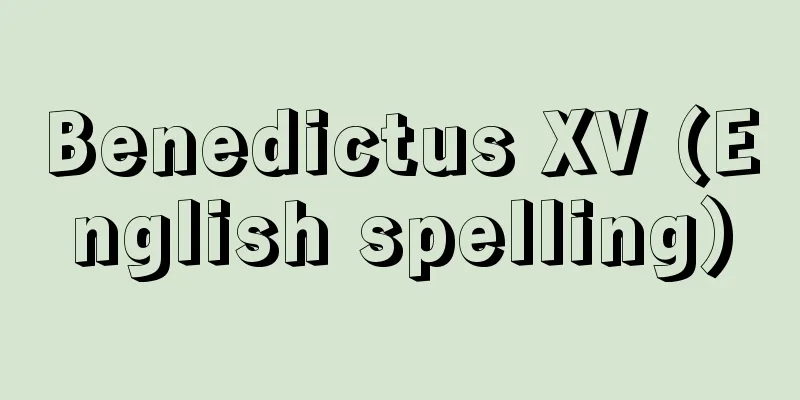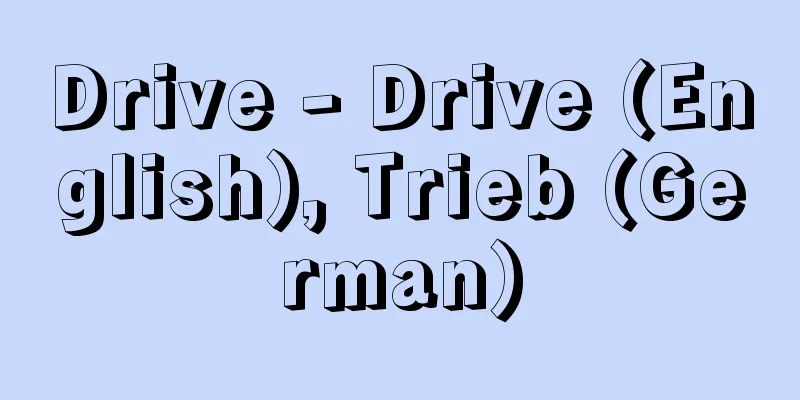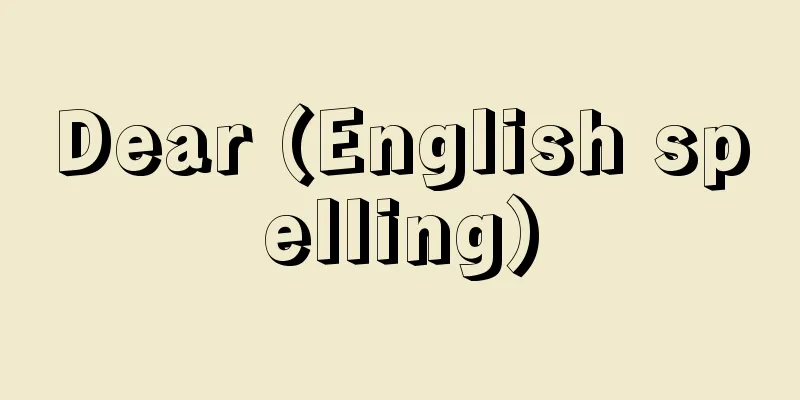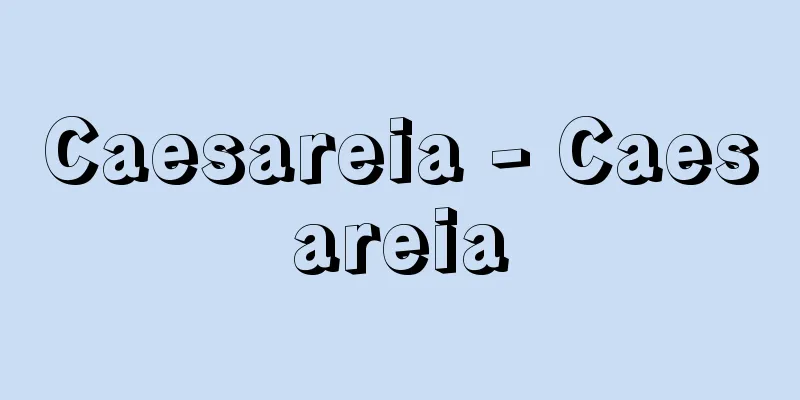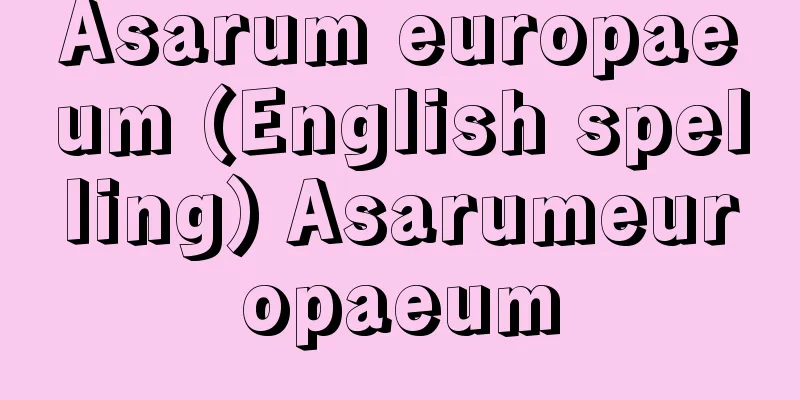Moral education
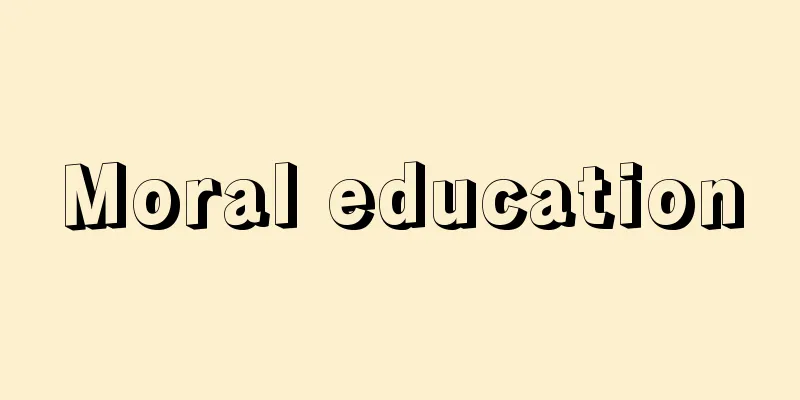
|
Educational activities that aim to cultivate a rich heart, promote awareness of how to live as a human being, and develop morality to live a better life. They also promote the development and upbringing of basic everyday behavioral patterns, such as moral habits. In Japan's educational settings in particular, moral education is said to cultivate the foundations of "life skills" necessary to be able to live an autonomous social life while cooperating with others in society. "Life skills" is a practical ability as a human being, and a "rich humanity" is an important element. "Rich humanity" refers to a humanity that has rich moral values, such as sensitivity to beauty and nature, basic ethics, a sense of justice and a spirit of social contribution, independence, self-restraint, and tolerance. Moral education refers to educational activities that cultivate these as practical abilities. The curriculum guidelines for elementary and junior high schools state that "moral education should be conducted throughout all educational activities at school, with moral education at the core," and 35 class hours per year are set aside for moral education (as of 2010). In high schools, a master plan is created to ensure that moral education is effectively implemented throughout all educational activities, and "ethics," "modern society," and "homeroom activities" are cited as core teaching situations that deepen students' awareness of their way of being and living as human beings. This article is written based on the curriculum guidelines revised in 2008. [Akiko Haga] The Importance of Moral EducationTrends and issues of modern Japanese children include a lack of self-esteem, a decline in awareness of norms, and immature self-control. It is also said that basic lifestyle habits are not yet established. Given the rapid changes in society and the decline in the educational power of families and communities, it is necessary for educational institutions to take adequate measures. In response to this situation, the Central Council for Education's report in 2008 stated the following: "It is becoming important to help children who lack self-confidence and feel anxious about their future and interpersonal relationships to gain confidence, establish basic lifestyle habits, and ensure that they acquire the minimum sense of norms that humans should have in order to live in society, including a sense of obedience to the law, through guidance and experience according to their developmental stage. In this regard, it is necessary to improve and enrich moral education in order to cultivate morality, such as human dignity and ethics, and to use this as a foundation to understand the meaning of laws and rules in a democratic society and the meaning of complying with them, and to develop people who can make independent judgments and act appropriately." Promotion of moral education focusing on norms is considered more important than ever. [Akiko Haga] Moral DevelopmentMorality is not something we are born with. It is something we learn and develop through various experiences in human society. As we develop, we change the way we perceive things, from heteronomy to autonomy, from subjectivity to objectivity, from one-sided to multi-sided, and from focusing only on results to emphasizing overall values, including motivation. This transformation in cognition overlaps with the development of understanding of moral values. In order to promote the development of morality, education that takes into account the developmental stage of each age is necessary. The current curriculum guidelines state that when creating a teaching plan, attention should be paid to "focusing the teaching content on the developmental stage and characteristics of children and students." This takes into consideration the understanding according to each stage of elementary school, middle school, and upper grades, and junior high school, and the differences in experience due to age, and emphasizes steadily promoting the development of morality based on the stage. [Akiko Haga] History of Moral EducationEven before the Meiji era, values concerning the way people should be and live their lives were conveyed in various forms in cultures such as Japanese classical literature, Buddhism, and Confucianism, and these in themselves were the practice of moral education. However, these were taught under a different system from modern school education, and the ideal human beings they aimed for cannot necessarily be said to coincide with modern moral education. In 1872 (Meiji 5), the "School System" was issued, which established Japan's first modern school system, and a subject called "moral education" was included in ordinary elementary schools. The content of the school system was Enlightenment-oriented, and there was a strong tendency to imitate the West. In response, Confucian scholars and others felt a sense of crisis about the disruption of Confucian values due to the introduction of Western civilization, and published the "Outline of Education" in 1879, arguing that Confucian moral education centered on benevolence, righteousness, loyalty, and filial piety should be the center of education, but this was not accepted, and the Liberal Education Order was promulgated based on the idea of emphasizing scientific education. However, in 1880, the Revised Education Act was issued, and moral education became the first subject in the order of subjects, and until the end of World War II, moral education was the subject of moral education. Furthermore, in 1890, the Prefectural Governors' Conference submitted a "Proposal on the Means of Cultivating Moral Education," which prompted the government to formulate the basis for moral education, and in October of the same year, the "Imperial Rescript on Education" was issued. In 1891, the Minister of Education set out a policy for the use of moral education textbooks. Many of the approved textbooks at this time were based on the virtues of the "Imperial Rescript on Education." From 1904, national textbooks were used, and for moral education, national textbooks based on the "Imperial Rescript on Education" were used immediately after its issuance. The national textbooks were revised four times after this, and while the emphasis was slightly different between the morality of the Emperor and the national polity and the morality of modern civil society, they never strayed from the nationalist framework. In 1945 (Showa 20), the Supreme Commander for the Allied Powers (GHQ) issued the "Matter Concerning the Suspension of Moral Education, Japanese History, and Geography," ordering the suspension of classes in the three subjects and the recall of textbooks. The following year, Japanese history and geography classes were allowed to resume, but moral education was never resumed. The Ministry of Education (now the Ministry of Education, Culture, Sports, Science and Technology) independently advocated moral education through civics, which was not a teaching content dictated from above, but rather intended to make students understand the society in which they lived and think about how they should act. However, in this educational reform, the civics subject was not established, and its philosophy was inherited by social studies. [Akiko Haga] The emergence of "morality"In September 1950, the Second United States Educational Mission published a report, emphasizing the need for moral education throughout the entire educational curriculum. In 1951, the Curriculum Council submitted a report on measures to promote moral education, and the Ministry of Education, in response, decided on the "Basic Measures for Promoting Moral Education" and began work on creating a manual for it. Attempts were made to improve moral education through the revision of the "Course of Study, General Edition (Draft)" in July 1951 and the revision of the content of social studies for elementary and junior high schools in February 1955. In 1957, the Minister of Education consulted the Curriculum Council on improving the elementary and junior high school curriculum, making it clear that he had a special interest in measures to strengthen moral education. In 1958, the Curriculum Council submitted a report entitled "Improvement of the Elementary and Junior High School Curriculum." Based on this, the Ministry of Education issued a notice regarding "Guidelines for the Implementation of Moral Education in Elementary and Junior High Schools," and special "moral education" classes were established in elementary and junior high schools starting in April 1958. In August 1958, the School Education Law Enforcement Regulations were amended to include four areas of curriculum for elementary and junior high schools (each subject, moral education, special educational activities, and school events), and moral education was included in the curriculum. In the same month, the Ministry of Education announced the "Course of Study - Moral Education" for both elementary and junior high schools. [Mitsunaga Otani] The Goals of Moral EducationThe goals of moral education in schools are set based on the fundamental spirit of education as defined in the Fundamental Law of Education and the School Education Law. Since the goals of moral education are linked to the goals of education as a whole, the specific goal is stipulated as "to cultivate morality as a foundation," and the role of moral education is to foster morality. Morality is composed of "moral sentiment," "moral judgment," "motivation and attitude to practice morality," and "moral habits," and these various aspects are deeply interrelated. The goal of moral education is to teach these various aspects to be closely interrelated as a whole, and to foster morality so that moral behavior occurs spontaneously and autonomously in children and students. [Akiko Haga] The basics of moral education in schoolsWhile moral education has always been something that is conducted "throughout all educational activities at school, with moral education classes at the core," in recent years it has been said to be something that "should be addressed consistently at all school levels," and the focus of instruction has been set according to the development of each school level and grade level, from kindergarten to elementary, junior high, and high school. It is important to seamlessly connect to effective instruction at each school level and grade level, and to accumulate consistent instruction that is conscious of the connections between schools. In addition, from the perspective of practically enhancing moral education throughout school education, the plan lists (1) creating a system centered on moral education promotion teachers as the main officers in charge of moral education, (2) creating an effective and specific overall plan that can actually be used, and (3) promoting open classes in elementary and junior high schools. It aims to enhance moral education by clearly indicating that moral education classes are essential and clarifying the teaching system so that moral education is carried out throughout all educational activities at schools. [Akiko Haga] Contents of moral educationIn the revised curriculum guidelines of 2008, the content of moral education is presented based on the following four perspectives regarding children's morality: (1) Mainly about oneself (understanding one's own existence in relation to oneself and striving to develop a desirable self). (2) Primarily related to interactions with other people (viewing oneself in relation to others and cultivating desirable human relationships). (3) Primarily related to a relationship with nature and the sublime (related to understanding oneself in relation to nature, beautiful things, and the sublime, and deepening one's awareness as a human being). (4) Mainly concerns relationships with groups and society (viewing oneself in relation to various social groups, one's hometown, one's nation and the international community, being aware of one's status as a Japanese living in an international community, and fostering the morality necessary for members of a peaceful and cultured society and nation). At each grade level, appropriate instruction must be given to all content items contained in the four perspectives, taking into account these relationships. The moral education content items are summarized into 16 items for "first and second grades," 18 items for "third and fourth grades," and 22 items for "fifth and sixth grades." [Akiko Haga] The history of the revision of the "morality" curriculum guidelinesThe curriculum guidelines had been revised five times prior to the 2008 revision, as detailed below, but the basic concept has remained the same. (1) The 1958 (Showa 33) revision in the general provisions states that "moral education in schools should essentially be conducted throughout all educational activities of the school," that "the goal of moral education is based on the fundamental spirit of education as set forth in the Fundamental Law of Education and the School Education Law," and that "moral education classes should aim to improve students' ability to practice morality." It lists 36 content items. (2) Revision in 1968 (Showa 43): The goal of moral education in the general rules was changed to "foster morality as the foundation" in order to distinguish it from the goal of education in general. In "moral education classes," it was changed to "maintain a close relationship with moral education in each subject and extracurricular activities, and through planned and progressive instruction, supplement, deepen and integrate it, improve moral judgment, enrich moral sentiment, and improve moral attitudes and motivation to practice." 32 content items were selected. (3) 1977 (Showa 52) revision: The general rules were revised to include the following goals: "To deepen human relations between teachers and students, and among students themselves," "To cooperate with families and the local community," and "To thoroughly instruct students in moral practice." At the end of moral education classes, the following was added: "The aim is to foster the ability to practice morality." The set of 28 items was narrowed down to this. (4) Revision in 1989 The general rules were amended to include "care must be taken to foster morality that is rooted in the inner self through rich experiences" and "fostering desirable human relationships." "Respect for life" was added, and emphasis was placed on cultivating "independent" Japanese people. The content items were expanded to 14 items for the lower grades, 18 items for the middle grades, and 22 items for the upper grades. The overall plan for moral education and the annual teaching plan were enhanced. (5) Revision in 1998 The general rules were revised to include the goals of moral education, adding "rich hearts" and "opening up the future," and indicating the enrichment of moral practice through volunteer activities and nature experience activities. The goal was also revised to "deepen awareness of moral values." The content items were 15 for lower grades, 18 for middle grades, and 22 for upper grades. [Akiko Haga] assignmentThe current Course of Study (2008 edition) lists the following specific points for improvement: "As information society rapidly advances, information ethics will be dealt with according to the developmental stage in order to deal with the dark side of information society, such as slander and bullying posted on Internet bulletin boards." Considering the current situation of "bullying" on Internet sites and the resulting suicides, teaching information ethics is one of the major issues for future school education. In particular, it is important to help students understand the dangers of anonymity reducing awareness of responsibility and the dangers of coming into contact with inappropriate information. The widespread use of mobile phones and computers and the trend of their use at younger ages have created new issues for moral education. [Akiko Haga] "Ministry of Education, eds.: Elementary School Curriculum Guidelines, Junior High School Curriculum Guidelines, Elementary School Commentary: Morals Edition, Junior High School Commentary: Morals Edition (1999, Printing Bureau, Ministry of Finance)" ▽ "Ministry of Education, eds.: Elementary Education Materials No. 696 (1998, Toyokan Publishing)" ▽ "Moral Education" edited by Yoshio Oshitani and Toshifumi Naito (1993, Minerva Shobo)" ▽ "Moral Development and Education" edited by Shigefumi Nagano (1985, Shinyosha)" [Reference items] | | | | | | | | | | | |Source: Shogakukan Encyclopedia Nipponica About Encyclopedia Nipponica Information | Legend |
|
豊かな心をもち、人間としての生き方の自覚を促し、よりよく生きるための道徳性を育成することをねらいとした教育活動。また、道徳的習慣などの日常の基本的行動様式が身につくように育成・発達を促す教育活動である。とくに日本の教育現場では、社会において人と協調しつつ自律的に社会生活を送ることができるようになるために必要な「生きる力」の基盤を培うものとされる。「生きる力」とは、人間としての実践的な力であるが、「豊かな人間性」が重要な要素である。「豊かな人間性」とは、美しいものや自然に感動する感性、基本的な倫理観、正義感や社会貢献の精神、自立心、自己抑制力、寛容などの豊かな道徳的価値を備えた人間性をさす。道徳教育は、これらを実践的な力として育成する教育活動をさす。 小学校および中学校の学習指導要領において「道徳の時間を要として学校の教育活動全体を通じて行う教育」と示されており、道徳の時間として年間35時間の授業時間数が当てられている(2010年現在)。高等学校においては、すべての教育活動を通じて道徳教育が効果的に実践されるよう全体計画を作成するとともに、「倫理」「現代社会」「ホームルーム活動」などが、生徒が人間としてのあり方・生き方についての自覚を深める中核的な指導場面としてあげられている。本項は、2008年(平成20)に改訂された学習指導要領に基づき記述する。 [芳賀明子] 道徳教育の重要性現代日本の子供の傾向・課題として、自尊感情の乏しさや規範意識の低下、自己統制の未熟といった問題点が指摘される。また、基本的な生活習慣の確立が不十分であるともいわれている。社会の激しい変化、また家庭・地域の教育力の低下を踏まえて、教育現場では十分な対応をしていくことが求められている。こうした状況に対し、2008年の中央教育審議会答申では以下のように述べられている。「自分に自信が持てず、将来や対人関係に不安を感じている子どもたちに自信を持たせ、基本的な生活習慣を確立させるとともに、遵法意識をはじめとする社会生活を送る上で人間として持つべき最低限の規範意識を発達の段階に応じて指導や体験を通して確実に身につけさせることが重要になっている。その際、人間としての尊厳や倫理観などの道徳性を養い、それを基盤として民主主義社会における法やルールの意義やそれを遵守することの意味を理解し、主体的判断し、適切に行動できる人間を育てる観点から、道徳教育の充実・改善が必要である」と。規範意識に焦点をあてた道徳教育の推進が、これまで以上に重要視されている。 [芳賀明子] 道徳性の発達道徳性は、生まれたときから身についているわけではない。人間社会におけるさまざまな体験を通して学び、形成していくものである。発達に従って、人は他律から自律へ、主観から客観へ、一面的な見方から多面的な見方へ、結果のみを重視する考え方から動機を含めた全体的な価値の重視へと認知の仕方を変えていく。この認知の変容は、道徳的価値の理解の発達と重なっている。道徳性の発達を促すためには、それぞれの年齢に応じた、発達の段階をふまえた教育が必要である。現在の学習指導要領においては、指導計画の作成に当たり留意点として、児童・生徒の「発達の段階や特性等を踏まえ、指導内容の重点化を図ること」と示されている。これは、小学校低学年・中学年・高学年、中学校とそれぞれの段階に応じた理解と、年齢による経験の差に配慮したものであり、段階を踏まえて着実に道徳性の発達を促すことが重視されている。 [芳賀明子] 道徳教育の歴史明治時代以前にも、人のあり方・生き方に関する価値について、国学、仏教、儒教等の諸文化のなかでさまざまな形で伝えられており、それ自体道徳教育の実践でもあった。しかし、近代の学校教育とは異なる体系のもとに行われており、目ざす人間像が、現代の道徳教育とはかならずしも一致しているとはいえない。 1872年(明治5)、日本最初の近代的学校制度を定めた「学制」が発布され、尋常小学校には「修身」という教科がおかれた。学制の内容は啓蒙(けいもう)主義的であり、欧米の模倣の傾向が強かった。これに対し、儒学者などが西洋文明の移入による儒教的な価値観の乱れに危機感を抱き、1879年「教学大旨」を発表、仁義忠孝を核とする儒教主義的な道徳教育を教育の中心とするよう主張するが受け入れられず、科学教育を重視するという考え方のもとに自由教育令が公布された。 しかし、1880年には改正教育令が公布され、教科の順番は修身が筆頭教科となり、第二次世界大戦終了時まで、修身科は道徳教育を担うことになる。さらに1890年、地方長官会議が「徳育涵養(かんよう)の義ニ付建議」を提出、これを契機として道徳教育の基になるものが政府内で策定されることになり、同年10月に「教育勅語」が渙発(かんぱつ)された。1891年には、修身教科書使用の方針が文部大臣から打ち出される。この時期の検定教科書は「教育勅語」の徳目に沿った徳目主義のものが多かった。1904年から国定教科書が使用されることになったが、修身科には、「教育勅語」渙発直後から「教育勅語」に基づいた国定教科書が使用されていた。国定教科書はこの後4回の改訂が行われ、天皇・国体に関する道徳と近代市民社会の道徳の間で力点の置き方を少しずつ異にしながら、国家主義の枠組みから外れることはなかった。 1945年(昭和20)、連合国最高司令部(GHQ)は、「修身、日本歴史及ビ地理停止ニ関スル件」を発し、3教科の授業停止と教科書回収を指令した。翌年に日本歴史と地理の授業は再開が許可されたが、修身は再開されることはなかった。文部省(現文部科学省)は、独自に公民科による道徳教育を主張、これは上から命令するような指導内容ではなく、生活している社会について理解し行動の在り方を考えさせようとするものであったが、このときの教育制度改革では、公民科は設置されず、その理念は社会科に受け継がれることになる。 [芳賀明子] 「道徳」の登場1950年9月、第2次アメリカ教育使節団は報告書を発表、道徳教育が全教育課程を通して必要とされていることを指摘、力説した。1951年、教育課程審議会は道徳教育の振興方策に関して答申を行い、これを受けて文部省は、「道徳教育振興基本方策」を決定し、その手引書作成に着手した。1951年7月、「学習指導要領・一般編(試案)」の改訂、および1955年2月、小・中学校社会科の内容の改訂などを通して、道徳教育の改善が試みられた。1957年、文部大臣は小・中学校教育課程改善に関し、教育課程審議会に諮問し、道徳教育の強化方策などに特別の関心のあることを明らかにした。1958年、教育課程審議会は「小学校・中学校教育課程の改善について」答申、これに基づき文部省は「小学校・中学校における『道徳』の実施要領」について通達を出し、1958年4月から小・中学校に「道徳」の時間が特設されることになった。 1958年8月、学校教育法施行規則を一部改正、小・中学校の教育課程は4領域(各教科・道徳・特別教育活動・学校行事)編成となり、道徳の時間が教育課程のなかに位置づけられた。そして、同月文部省は、小・中学校それぞれの「学習指導要領・道徳編」を告示する。 [大谷光長] 道徳教育の目標学校における道徳教育の目標は、教育基本法および学校教育法に定められた教育の根本精神に基づいて設定されている。道徳教育の目標は、教育全体の目標にも通じるものであるため、固有の目標として「その基盤としての道徳性を養うこと」と規定し、道徳教育の役割が道徳性の育成にあるとしている。 道徳性は、「道徳的心情」「道徳的判断力」「道徳的実践意欲と態度」「道徳的習慣」から構成され、これらの諸様相が相互に深く関連している。これらの諸様相が全体として密接な関連をもつように指導し、道徳的行為が児童・生徒の自発的・自律的に生起するよう、道徳性の育成を行うことが、道徳教育の目標である。 [芳賀明子] 学校教育における道徳教育の基本的なあり方道徳教育が「道徳の時間を要として学校の教育活動全体を通じて」行うものであることは、従前から変わっていないが、近年のあり方としては「すべての学校段階において一貫して取り組むべきものである」とされ、幼稚園から小・中・高等学校の学校段階、学年段階ごとの発達に応じた指導の重点が示されている。学校段階・学年段階でとぎれることなく、効果的な指導へとつながること、また学校間の接続を意識した一貫した指導の積み重ねが重要である。 また、学校教育全体で取り組む道徳教育の実質的な充実の観点から、(1)道徳教育主担当者としての道徳教育推進教師を中心とした体制づくり、(2)実際に活用できる有効で具体性のある全体計画の作成、(3)小・中学校における授業公開の促進、が挙げられている。道徳の時間が要となっていることを明確に示し、かつ学校の教育活動全体を通じて道徳教育が行われるよう、指導体制を明らかにすることによって、道徳教育の充実を目ざしている。 [芳賀明子] 道徳教育の内容2008年改訂の学習指導要領において、道徳の内容は、児童の道徳性を次の四つの視点からとらえ、示している。 (1)主として自分自身に関すること(自己のあり方を自分自身とのかかわりにおいてとらえ、望ましい自己の形成を図ることに関するもの)。 (2)主として他の人とのかかわりに関すること(自己を他の人とのかかわりのなかでとらえ、望ましい人間関係の育成を図ることに関するもの)。 (3)主として自然や崇高なものとのかかわりに関すること(自己を自然や美しいもの、崇高なものとのかかわりにおいてとらえ、人間としての自覚を深めることに関するもの)。 (4)主として集団や社会とのかかわりに関すること(自己をさまざまな社会集団や郷土、国家、国際社会とのかかわりのなかでとらえ、国際社会に生きる日本人としての自覚に立ち、平和的で文化的な社会および国家の成員として必要な道徳性の育成を図ることに関するもの)。 各学年段階においては、これらの関連を考慮しながら、四つの視点に含まれるすべての内容項目について適切に指導しなければならない。 道徳の内容項目は、「第1学年及び第2学年」が16項目、「第3学年及び第4学年」が18項目、「第5学年及び第6学年」が22項目にまとめられている。 [芳賀明子] 学習指導要領における「道徳」改訂の歩み学習指導要領は、2008年(平成20)の改訂より前に、以下のとおり5回改訂されているが、基本的な考え方は変わらない。 (1)1958年(昭和33)の改訂 総則において「学校における道徳教育は、本来、学校の教育活動全体を通じて行うことを基本とする」こと、「道徳教育の目標は、教育基本法および学校教育法に定められた教育の根本精神に基づく」こと、「道徳の時間においては、道徳的実践力の向上を図ること」を挙げている。36の内容項目を挙げている。 (2)1968年(昭和43)の改訂 総則の道徳教育の目標を、教育全般の目標と区別するために「その基盤としての道徳性を養うこと」を加えた。「道徳の時間」においては「各教科、特別活動における道徳教育と密接な関連を保ちながら、計画的、発展的な指導を通して、これを補充し、深化し、統合し、道徳的判断力を高め、道徳的心情を豊かにし、道徳的態度と実践意欲の向上を図る」とした。32の内容項目に精選。 (3)1977年(昭和52)の改訂 総則の目標に、新たに「教師と児童及び児童相互の人間関係を深めること」「家庭や地域社会との連携を図りながら」「道徳的実践の指導を徹底する」を加えた。道徳の時間の末尾に「道徳的実践力を育成するものとする」を加えた。28項目に精選。 (4)1989年(平成1)の改訂 総則に「豊かな体験を通して内面に根ざした道徳性の育成が図られるよう配慮しなければならない」「望ましい人間関係の育成」を加えた。「生命に対する畏敬の念」を加え、「主体性のある」日本人の育成を強調した。内容項目は、低学年14項目、中学年18項目、高学年22項目とした。道徳教育の全体計画と年間指導計画の充実を図った。 (5)1998年(平成10)の改訂 総則に、道徳教育の目標を掲げるとともに、「豊かな心」「未来を拓く」を加え、ボランティア活動や自然体験活動など道徳的実践の充実を示した。目標に「道徳的価値の自覚を深め」を加えた。内容項目は低学年15項目、中学年18項目、高学年22項目とした。 [芳賀明子] 課題現在の学習指導要領(2008年版)において、改善すべき具体的事項として、「社会における情報化が急速に進展する中、インターネット上の『掲示板』への書き込みによる誹謗中傷やいじめといった情報化の影の部分に対応するため、発達の段階に応じて情報モラルを取り扱う」ことが示された。インターネットのサイトを使った「いじめ」と、それを苦にした自殺者も出た現状を考えると、情報モラルについての指導は、今後の学校教育における大きな課題の一つである。とくに、匿名性が責任の自覚を薄くしていることの危険や、適切でない情報に接することの危険を理解させることが重要である。携帯電話やパソコンの普及と使用の低年齢化は、道徳教育の新たな課題となっている。 [芳賀明子] 『文部省編『小学校学習指導要領』『中学校学習指導要領』『小学校解説書・道徳編』『中学校解説書・道徳編』(1999・大蔵省印刷局)』▽『文部省小学校課・幼稚園課編『初等教育資料No.696』(1998・東洋館出版社)』▽『押谷由夫・内藤俊史編著『道徳教育』(1993・ミネルヴァ書房)』▽『永野重史編『道徳性の発達と教育』(1985・新曜社)』 [参照項目] | | | | | | | | | | | |出典 小学館 日本大百科全書(ニッポニカ)日本大百科全書(ニッポニカ)について 情報 | 凡例 |
>>: The Theory of Moral Sentiments
Recommend
Boulanger, L. (English spelling) BoulangerL
…French composer and music educator. She studied ...
The ninth Hojo clan leader
Kabuki script. Historical piece. Three acts. Writt...
Wessel Gansfort
Around 1419-89 Dutch humanist. Also known as Johan...
Ina Basin
A long narrow basin along the Tenryu River in the...
Kupang - Kupang (English spelling)
A port city in the southwest of Timor Island, eas...
Attic dialect - Attic dialect
...The rhythm of the epic poem, which has six lin...
Tango [town] - Tango
An old town in Takeno District, occupying the nort...
Morison, R.
…He studied at Trinity College, Cambridge, and be...
Rehn, LM (English spelling)
... refers to surgical treatment for diseases of ...
Miscanthus sacchariflorus (English spelling) Miscanthussacchariflorus
…[Yoshiharu Iijima]. … *Some of the terminology t...
Yugoi (boiled carp) - Yugoi (English spelling) Kuhlia marginata
A fish of the family Polycarpidae (illustration) i...
Peace Issues Forum - Heiwamondaikondankai
The Scientists' Peace Issues Roundtable was or...
Ishimaru Iwaminokami - Ishimaru Iwaminokami
...A shogunate official in the early Edo period. ...
Zoshchenko
Russian (Soviet) writer. Born in Poltava. A master...
Metropolitan Police Station
Inspection bodies in the Ming and Qing dynasties ...

